Dive into your creative stream
Archeology - Blog Posts
Any archeologists wanna date me?
My goal in life is to taste tomb honey



Sean bienvenidos, amantes del mundo japonés, a una nueva entrega. En esta ocasión, vengo a hablar sobre un estadounidense, de unos 70 años de edad, el cual ha dañado severamente con sus uñas las famosas puertas torii, una de ellas. Además, la religión sintoísta es un modo de vida y no una religión como tal, pero esto no es el caso de esta publicación, ya que vengo a criticar un problema, que ya critiqué hace tiempo en una publicación de cuando una chilena usó las mismas puertas para utilizarlas como las típicas barras de los parques para hacer flexiones y ese tipo de cosas. En este caso es un estadounidense ingrato e inculto, si se me permite la palabra; se podía haber hecho eso en otra zona de su cuerpo y no dañar un bien cultural y religioso de la cultura japonesa. Aparte de una multa que tiene que pagar, no vamos a entrar en detalle de la cantidad de dinero a pagar, pero posiblemente será bastante alta, más de 3,000 yenes; posiblemente incluso diría más, como unos 60 a 90 euros, aproximadamente. Después estará vetado de por vida en el país del sol naciente, o sea, a esta persona le pondrán el culo igual que la bandera del país del sol naciente y este es el principal problema de tolerar o ser tolerante con el turismo. Japón no es un parque de atracciones, por favor, comportarse si van a un país. No hagan este tipo de cosas porque a nadie le gustaría que alguien vaya a tu país y haga un graffiti o algo peor en un edificio. En este caso, por suerte, el torii, es de madera; hay otros que son de piedra y cemento, pero por suerte esta era de madera. ¡Ojo! No estoy apoyando ni mucho menos la gamberrada del estadounidense, pero lo que quiero decir es que, ya sea con una uña, puede haber sido con un palo o con cualquier otra cosa. Por favor, antes de hacer algo, piensa un poco antes de hacer daño y qué es lo que puede causar. Parece que estamos en pleno siglo 21 y parece ser que la evolución humana, como que no existe o no es apenas visible, pero bueno, os dejo con esa reflexión en esta publicación, modo crítico, modo reflexivo. Espero que os haya gustado y nos vemos en próximas publicaciones. Hasta la próxima.

Sean bienvenidos, japonistasarqueológicos, a una nueva entrega de religión nipona, una vez dicho esto pónganse cómodos qué empezamos. - Seguramente, todos hemos escuchado hablar del Budismo y Sintoísmo, dos religiones muy diferentes entre sí, ya que sus pilares religiosos no están hechos de la misma materia, voy a intentar resumir este tema para que todos podamos entenderlo mejor. ¿Cuándo llego el budismo a Japón? Llego en el siglo VI d.c en el período kofun también denominado protohistoria, lo que no voy a negar y lo que todos sabemos es que china, India y otros países influenciaron a Japón y eso lo podemos ver todavía a día de hoy. - Pero hace poco vi el uso de la palabra Sincretismo religioso, lo cual, me parece el término de lo menos apropiado, ¿Qué significa sincretismo? Unión, fusión e hibridación, casos más claros, lo podemos ver en Latinoamérica y con Grecia y Roma. Por lo cual el término más apropiado para este caso sería coexistencia o convivencia, además en el periodo meiji hubo una reforma religiosa para separar ambas religiones y convivencia al sintoísmo, religión del estado, a esto se le llama Shinbutsu bunri en hiragana sería:(しんぶつぶんり) ¿Qué opinan ustedes? - Espero que os haya gustado y nos veamos en próximas publicaciones que pasen una buena semana. - ようこそ、考古学的日本びいきの皆さん、日本の宗教の新連載へ。 - 仏教と神道、この二つの宗教の柱は同じ材料でできているわけではないので、私たちは皆、この二つの宗教について聞いたことがあるだろう。 仏教はいつ日本に伝来したのだろうか?仏教が日本に伝来したのは紀元6世紀の古墳時代で、原始時代とも呼ばれている。しかし、中国やインド、その他の国々が日本に影響を与えたことは否定しないし、誰もが知っていることである。 - しかし最近、宗教的シンクレティズムという言葉が使われているのを目にした。シンクレティズムとは何を意味するのだろうか?統合、融合、ハイブリッド化、その最も明確な例はラテンアメリカやギリシャ、ローマに見られる。また、明治時代には宗教改革が行われ、両宗教を分離し、国教である神道と共存させた。 - 今後の記事もお楽しみに。
-
Welcome, archaeological Japanophiles, to a new instalment of Japanese religion, so make yourselves comfortable and let's get started.
Surely, we have all heard about Buddhism and Shintoism, two very different religions from each other, as their religious pillars are not made of the same material, I will try to summarize this topic so we can all understand it better. When did Buddhism arrive in Japan? It arrived in the 6th century A.D. in the Kofun period also called protohistory, what I will not deny and what we all know is that China, India and other countries influenced Japan and we can still see that today.
But recently I saw the use of the word religious syncretism, which seems to me the least appropriate term, what does syncretism mean? Union, fusion and hybridisation, the clearest cases of which can be seen in Latin America and with Greece and Rome. So the most appropriate term for this case would be coexistence or coexistence, also in the meiji period there was a religious reform to separate both religions and coexistence to Shinto, state religion, this is called Shinbutsu bunri in hiragana would be:(しんぶつぶんり) What do you think?
Hope you liked it and see you in future posts have a good week.


Sean bienvenidos japonítasarqueológicos a una nueva entrega en esta ocasión nos desviamos un poco del contenido que suelo hacer, dicho ésto comencemos. - ¿Cómo afectará esto a la arqueológia e historia? ¿Y a la economía? Antes que nada ¿Por qué la situación está así? Esto viene desde el siglo XIX, cuando China sede Taiwán tras perder la Guerra sino-japonesa estará bajo dominio 1895-1945, desde el momento en ese momento se creó la República independiente de China. - Razones por las que China quiere Taiwan: 1°Incorporarla de nuevo a su territorio. 2° Taiwán es la gran exportadora de microchip a nivel mundial. 3° Esto amenazaría el territorio de Japón, ya que las islas de Okinawa está Cerca. Además, china dirá que le están amenazando sus fronteras. - ¿Cómo creéis que afectará a la economía mundial? - Os deseo un cordial saludo y nos vemos en próximas publicaciones de Arqueología e historia japonesa. - 考古学的ジャポナイトは、新しい記事へようこそ。 - これは考古学と歴史にどのように影響しますか? そして経済へ? まず、なぜこのような状況になったのでしょうか。 これは、19 世紀に中国が日中戦争に敗れた後、台湾を占領したときのことであり、独立した中華民国が誕生した瞬間から、1895 年から 1945 年まで台湾は支配下に置かれることになります。 - 中国が台湾を欲しがる理由: 1°テリトリーに戻す。 第 2 位 台湾はマイクロチップの世界最大の輸出国です。 3° 沖縄の島々が近くにあるので、これは日本の領土を脅かすだろう. さらに、中国は国境が脅かされていると言うでしょう。 - 世界経済にどのような影響を与えると思いますか。 - 今後の考古学と日本史の出版物でお会いしましょう。 - Archaeological Japonites are welcome to a new installment, this time we deviate a bit from the content that I usually do, with that said, let's begin. - How will this affect archeology and history? And to the economy? First of all, why is the situation like this? This comes from the 19th century, when China seized Taiwan after losing the Sino-Japanese War, it will be under rule from 1895-1945, from the moment at which the independent Republic of China was created. - Reasons why China wants Taiwan: 1° Incorporate her back into her territory. 2nd Taiwan is the world's largest exporter of microchips. 3° This would threaten the territory of Japan, since the islands of Okinawa are nearby. In addition, China will say that its borders are being threatened. - How do you think it will affect the world economy? - I wish you a cordial greeting and see you in future publications of Archeology and Japanese history.

Sean bienvenidos japonistaarqueológicos a una nueva entrega de arqueológica japonesa dicho esto pónganse cómodos que empezamos. En esta ocasión, nos trasladamos a las ruinas de Saigu que están localizadas en la prefectura de Mie además es un sitio histórico nacional en Meiwa-cho, en el cual vivió Saio, la princesa que sirvió a Ise Jingu en lugar del emperador. - Esto lo sabemos gracias a los restos arqueológicos se, cree que se construyó entre el período Nara tardío y el período Heian temprano, se componen de cuatro edificios. - Estén atentos ya que les iré informando de todo lo que se vaya sabiendo,¿ Conocían este lugar? Espero que os haya gustado y nos vemos el día 22 nuevamente, os deseo un cordial saludo. - 日本の考古学の新しい記事へようこそ。 今回は、伊勢神宮に仕えた皇女・斎王が住んでいた、三重県明和町にある国の史跡「斎宮跡」に移動しました。 - 考古学的遺跡のおかげで、奈良時代後期から平安時代初期に建てられたと信じられており、4つの建物で構成されています。 - わかっていることはすべてお知らせしますので、お楽しみに、このサイトをご存知でしたか? 気に入っていただけて、22日にまたお会いできることを願っています。 - Welcome japonistasarqueológicos to a new installment of Japanese archeology, having said that, make yourself comfortable, we're starting. This time, we moved to the Saigu Ruins, which is located in Mie Prefecture and is a national historic site in Meiwa-cho, where Saio, the princess who served Ise Jingu instead of the emperor, lived. - We know this thanks to the archaeological remains, I know, it is believed that it was built between the late Nara period and the early Heian period, it is made up of four buildings. - Stay tuned, since I will inform you of everything that is known, did you know this site? I hope you liked it and see you again on the 22nd, I wish you a cordial greeting.

Sean bienvenidos japonistasarqueológicos, ha una noticia arqueológica nipona en esta ocasión nos trasladamos a la protohistoria nipona y para ser más precisos al periodo Kofun(こふんじだい) 250 al 592 d.c finales de siglo VI para ser más exactos, dicho esto pónganse cómodos que empezamos. - Se ha descubierto un grupo de tumbas con túneles subterráneos que datan de la primera mitad del Medio Kofun Miyakonojo Aihara, localizados en la ciudad de Miyakonojo, prefectura de Miyazaki. Muchos de ellos tienen las cámaras funerarias en donde se consagran los cadáveres, pero uno de los 22 que se encontraron tenía una forma inusual, ya que una piedra bloqueaba el medio del hoyo horizontal. - Las paredes están pintadas con tinte rojo y otra con dos fosas que conducían a la misma cámara funeraria. Las tumbas subterráneas de entrada horizontal, que se descubrieron en la ciudad de Ebino alrededor del siglo IV ya que era lo que se creía anteriormente, pero ahora es posible que muchas de ellas las estuvieran construyendo al mismo tiempo. - El segundo sondeo que se realizó en mayo del año pasado 2022, se habían excavado aproximadamente unos 4.200 metros cuadrados. También se encontraron unos artículos funerarios como: espadas de hierro y puntas de flecha en la cámara funeraria y en las fosas. El suelo se rellenará a partir de enero del próximo año y se completará un informe a finales del año fiscal 2023. - 日本の考古学者の皆さん、今回は日本の原始時代、正確には6世紀末の古墳時代(西暦250年〜592年)に話を移します。 - 宮崎県都城市にある古墳時代中期前半の地下トンネルを持つ古墳群「都城相原」が発見された。その多くは死体を安置する埋葬室を備えているが、発見された22基のうち1基は、横穴の真ん中を石が塞いでいるという珍しい形をしていた。 - 壁には赤い染料が塗られ、もうひとつには同じ埋葬室につながる2つの穴がある。えびの市で発見された横穴式地下古墳は、従来考えられていたように4世紀頃に発見されたが、現在では多くの古墳が同時期に造られていた可能性がある。 - 昨年5月に行われた第2回目の調査では、約4,200平方メートルを発掘していました。また、鉄剣や矢じりなどの墓誌類も埋葬室や穴から発見された。来年1月から土壌の埋め戻しを行い、2023年度中に報告書を完成させる予定です。 - Welcome Japanese archaeologists, this time we move to the Japanese protohistory and to be more precise to the Kofun period(こふんじだい) 250 to 592 AD at the end of the 6th century to be more exact, that said make yourselves comfortable and let's start. - A group of tombs with underground tunnels dating back to the first half of the Middle Kofun Miyakonojo Aihara, located in Miyakonojo City, Miyazaki Prefecture, have been discovered. Many of them have the burial chambers where corpses are enshrined, but one of the 22 that were found had an unusual shape, with a stone blocking the middle of the horizontal hole. - The walls are painted with red dye and another with two pits leading to the same burial chamber. Underground tombs with a horizontal entrance, which were discovered in the city of Ebino around the 4th century as it was previously believed, but it is now possible that many of them were being built at the same time. - The second survey, which was carried out in May last year 2022, had excavated approximately 4,200 square metres. Some grave goods such as iron swords and arrowheads were also found in the burial chamber and in the pits. The soil will be backfilled from January next year and a report will be completed by the end of fiscal year 2023.

日本の考古学と科学思想の歴史。
第2章 :
日本の考古学者の皆さん、哲学的観点から見た新しい日本考古学へようこそ。 — 前の章で、特定のトピック、歴史、考古学、人類学について質問されるとき、たとえば「私たちの先祖は誰ですか?」とコメントしました。 そして彼らはどうやって X 場所にたどり着いたのでしょうか? 考古学自体が 19 世紀末の 1877 年に登場したとき、1884 年に人類学研究所が、1895 年に日本考古学協会が誕生したことについて触れます。 - 19 世紀の人なら、「私は誰ですか、どこから来たのですか?」と尋ねるでしょう。 ドイツ語、中国語、ノルウェー語、日本語などを尋ねることができます。 この種の質問は今日に至るまで答えられていません。 歴史学と考古学はそれらに答えを与えておらず、今日の他の分野でさえさらに多くのことを知っていますが、道のりはまだ長いです。 19世紀の日本、特にその終わり頃は、自分たちの起源を知りませんでした。 1980 年代の日本の科学者なら誰でも、最初の日本人入植者は誰だったのか疑問に思うでしょう。 ここに定住するきっかけは何ですか? 現在、最初の入植者は約 3 万年前に到着したことが知られていますが、彼らだけだったのでしょうか? この諸島には、海面が現在より 120 倍も低かったため、中国と朝鮮の半島を北と南から通ってやって来た最初の入植者がいたことが知られています。 日本人は非常に古い本を 2 冊持っていることが知られており、1 冊は西暦 711 年、もう 1 冊は西暦 722 年のものです。 最初の書紀は古事記と呼ばれ、二番目の日本書紀は、神 (カミスと呼ばれる) による西暦 660 年からの日本の建国について語っています。この日本の神聖な起源の概念は、第二次世界大戦 (第二次世界大戦) まで続きます。 これら 2 冊の本は、ヨーロッパではギリシャとローマに遡る最古の本に相当します。 - 気に入っていただければ幸いです。今後の投稿でお会いしましょう。良い一週間をお過ごしください。
HISTORY OF JAPANESE ARCHEOLOGY AND SCIENTIFIC THOUGHT.
Episode 2:
Welcome, Japanesearchaeologicalists, to a new installment of Japanese archaeology, seen from a philosophical point of view. Having said that, get comfortable and let's begin.
—
In the previous chapter, we commented that when we are asked questions about certain topics, history, archeology and anthropology, for example: Who were our ancestors? And how did they get to X place? We mention, when archeology itself emerged at the end of the 19th century, 1877, the origin of the anthropology laboratory in 1884 and in 1895 the Japanese archeology society.
-
A person from the 19th century would ask: Who am I, where do I come from? We could ask a: German, Chinese, Norwegian, Japanese, etc. These types of questions remain unanswered to this day. History and archeology have not given them an answer, even other disciplines today know much more, but there is still a long way to go. Japan during the 19th century, especially the end of that period, did not know its own origin. Any Japanese scientist in the 1980s would wonder who were the first Japanese settlers? What led you to settle here? Currently, it is known that the first settlers arrived about 30,000 years ago. Were they the only ones? It is known that the archipelago was inhabited by other inhabitants who were the first settlers. They arrived through the peninsula of China and Korea, both from the north and the south, since the sea level was 120 times lower than today. It is known that the Japanese have two very old books, one dates from 711 and the other from 722 AD. The first is called Kojiki and the second Nihonshoki, the Kojiki tells of the founding of Japan from the year 660 AD by the gods (called kamis), this concept of the divine origin of Japan would last until World War II (2ww). These two books would be the equivalent in Europe of the oldest dating back to Greece and Rome.
-
I hope you liked it and see you in future posts, have a good week.

HISTORIA DE LA ARQUEOLOGÍA JAPONESA Y EL PENSAMIENTO CIENTÍFICO.
Capítulo 1: Sean bienvenidos, japonistasarqueológicos, a una nueva entrega de arqueología nipona, vista desde un punto de vista filosófico, una vez dicho esto pónganse cómodos qué empezamos. — Seguramente, todos nos hacemos las mismas preguntas cuando se nos pregunta determinados temas de historia y de arqueología. ¿Quiénes eran nuestros antepasados y por qué llegaron a este determinado lugar y no a x? ¿De qué medios disponían para lograr determinadas hazañas históricas? En nuestro caso nos centraremos en dos preguntas determinadas ¿Quiénes fueron los primeros pobladores del archipiélago japonés? Y de ver cómo dicha idea ha llegado a nuestros días sin una respuesta clara, ya que tanto arqueólogos, historiadores, antropólogos, entre otros, han intentado dar una posible respuesta a una de las mayores incógnitas de la historia de la arqueología japonesa. — ¿Cuándo surgió la arqueología japonesa propiamente dicha? La historia de Japón es un tanto complicada, debido a que la ciencia propiamente dicha no nace hasta finales del siglo XIX, para ser más exactos 12 de abril 1877 ¿Cuándo surgen las sociedades arqueológicas, antropológicas y el laboratorio de antropología en Tokio? Además, tuvieron mucha influencia de gente tanto de Europa como de Estados Unidos, ya que tenían una gran influencia para aquel momento y mencionaremos algunos y a uno de los arqueólogos más destacados del mundo japonés. — ¿Cuándo surgen las sociedades arqueológicas, antropológicas y el laboratorio de antropología en Tokio? Para responder a dicha pregunta: A partir de 1880,vino un proceso gradual de institucionalización a la arqueología, generando un nuevo marco académico y universitario: Dando lugar al nacimiento de la Sociedad Antropológica de Tōkyō 1884, se creó el Laboratorio de Antropología en la Universidad de Tōkyō 1888,la fundación de la Sociedad Arqueológica se fundó en Japón en 1895. — Espero que os haya gustado y nos vemos en próximas publicaciones que pasen una buena semana.
HISTORY OF JAPANESE ARCHEOLOGY AND SCIENTIFIC THOUGHT.
Chapter 1: Welcome, Japanesearchaeologicalists, to a new installment of Japanese archaeology, seen from a philosophical point of view. Having said that, get comfortable and let's begin. — Surely, we all ask ourselves the same questions when we are asked certain topics in history and archeology. Who were our ancestors and why did they arrive at this certain place and not x? What means did they have to achieve certain historical feats? In our case we will focus on two specific questions: Who were the first settlers of the Japanese archipelago? And to see how this idea has reached our days without a clear answer, since archaeologists, historians, anthropologists, among others, have tried to give a possible answer to one of the biggest unknowns in the history of Japanese archaeology. — When did Japanese archeology itself emerge? The history of Japan is somewhat complicated, because science itself was not born until the end of the 19th century, to be more exact April 12, 1877 When did the archaeological and anthropological societies and the anthropology laboratory emerge in Tokyo? In addition, they had a lot of influence from people from both Europe and the United States, since they had a great influence at that time and we will mention some of them and one of the most prominent archaeologists in the Japanese world. — When did the archaeological and anthropological societies and the anthropology laboratory emerge in Tokyo? To answer this question: Starting in 1880, a gradual process of institutionalization of archeology came, generating a new academic and university framework: Giving rise to the birth of the Tōkyō Anthropological Society 1884, the Anthropology Laboratory was created at the University from Tōkyō 1888, the foundation of the Archaeological Society was founded in Japan in 1895. — I hope you liked it and see you in future posts, have a good week.
日本の考古学と科学思想の歴史。
第1章: 日本の考古学者の皆さん、哲学的観点から見た新しい日本考古学へようこそ。 — 確かに、歴史や考古学の特定のトピックを尋ねられたとき、私たちは皆同じ質問をするでしょう。 私たちの祖先は誰でしたか、そしてなぜ彼らは x ではなくこの特定の場所に到着したのでしょうか? 彼らは特定の歴史的偉業を達成するためにどのような手段を必要としたのでしょうか? 私たちの場合は、2 つの具体的な質問に焦点を当てます。日本列島の最初の入植者は誰ですか? そして、考古学者、歴史家、人類学者などが、日本の考古学史上最大の未知の一つに可能な答えを与えようとして以来、この考えが明確な答えがないまま、どのようにして現代に至ったのかを見てみましょう。 — 日本の考古学自体はいつ頃から生まれたのでしょうか? 日本の歴史はやや複雑です。科学そのものが誕生したのは 19 世紀末、より正確には 1877 年 4 月 12 日です。考古学人類学協会と人類学研究所が東京に誕生したのはいつですか? さらに、彼らは当時大きな影響力を持っていたため、ヨーロッパとアメリカの両方の人々から多くの影響を受けていました。彼らの一部と日本の世界で最も著名な考古学者の一人についても言及します。 — 東京に考古人類学会や人類学研究室が誕生したのはいつですか? この質問に答えるには、1880 年から考古学の制度化が段階的に進み、新しい学問と大学の枠組みが生まれました。1884 年に東京人類学会が誕生し、1888 年に東京で人類学研究室が大学に設立されました。考古学協会の財団は 1895 年に日本で設立されました。 — 気に入っていただければ幸いです。今後の投稿でお会いしましょう。良い一週間をお過ごしください
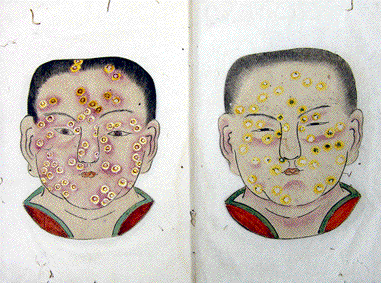
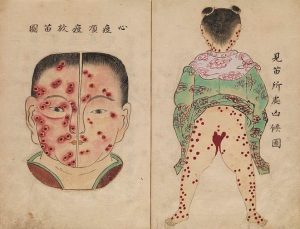
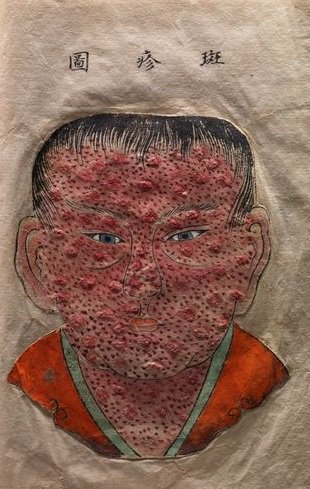


Sean bienvenidos a una nueva entrega de historia en esta ocasión, os comentaré una de las epidemias que azotó al país del Sol naciente una vez dicho esto póngase cómodos que empezamos. - La epidemia tuvo lugar en el periodo Nara (710-794) y la espidemia tubo lugar en 735-737.¿Conocían la epidemia? - Espero que os guste y nos vemos en próximas publicaciones, que pasen una buena semana. - Welcome to a new installment of history on this occasion, I will tell you about one of the epidemics that hit the country of the rising sun, having said that, make yourself comfortable and let's start. - The epidemic took place in the Nara period (710-794) and the epidemic took place in 735-737. Did they know about the epidemic? - I hope you like it and see you in future publications, have a good week. - この機会に、新たな歴史へようこそ。日出ずる国を襲った疫病の一つについてお話します。そうは言っても、気を楽にして始めましょう。 - 奈良時代(710年~794年)に流行し、735年~737年に流行しました。 彼らは疫病について知っていましたか? - 気に入っていただければ幸いです。今後の出版物でお会いできることを願っています。良い一週間をお過ごしください。


Sean bienvenidos, japonistasarqueológicos, a una nueva entrega de religión nipona, una vez dicho esto pónganse cómodos qué empezamos. - Seguramente, todos hemos escuchado hablar del Budismo y Sintoísmo, dos religiones muy diferentes entre sí, ya que sus pilares religiosos no están hechos de la misma materia, voy a intentar resumir este tema para que todos podamos entenderlo mejor. ¿Cuándo llego el budismo a Japón? Llego en el siglo VI d.c en el período kofun también denominado protohistoria, lo que no voy a negar y lo que todos sabemos es que china, India y otros países influenciaron a Japón y eso lo podemos ver todavía a día de hoy. - Pero hace poco vi el uso de la palabra Sincretismo religioso, lo cual, me parece el término de lo menos apropiado, ¿Qué significa sincretismo? Unión, fusión e hibridación, casos más claros, lo podemos ver en Latinoamérica y con Grecia y Roma. Por lo cual el término más apropiado para este caso sería coexistencia o convivencia, además en el periodo meiji hubo una reforma religiosa para separar ambas religiones y convivencia al sintoísmo, religión del estado, a esto se le llama Shinbutsu bunri en hiragana sería:(しんぶつぶんり) ¿Qué opinan ustedes? - Espero que os haya gustado y nos veamos en próximas publicaciones que pasen una buena semana. - Primera foto :santuario Heian Jingu(Kyoto) Segunda foto: Templo Rengeoin( Kyoto) - Welcome, archaeological Japanists, to a new installment of Japanese religion, having said that, make yourself comfortable as we begin. - Surely, we have all heard of Buddhism and Shintoism, two very different religions from each other, since their religious pillars are not made of the same material, I am going to try to summarize this topic so that we can all understand it better. When did Buddhism arrive in Japan? It arrived in the 6th century AD in the Kofun period also called protohistory, which I will not deny and what we all know is that China, India and other countries influenced Japan and we can still see that today. - But I recently saw the use of the word religious syncretism, which seems to me to be the least appropriate term. What does syncretism mean? Union, fusion and hybridization, clearest cases, we can see it in Latin America and with Greece and Rome. Therefore, the most appropriate term for this case would be coexistence or coexistence. In addition, in the Meiji period there was a religious reform to separate both religions and coexistence with Shintoism, the state religion. This is called Shinbutsu bunri in hiragana: (しん ぶつぶんり) What do you think? - I hope you liked it and we'll see you in future posts and have a good week. - First photo: Heian Jingu Shrine (Kyoto) Second photo: Rengeoin Temple (Kyoto) - 考古学者の日本主義者の皆さん、日本の宗教の新しい記事へようこそ。そうは言っても、安心して始めてください。 - 確かに、私たちは皆、仏教と神道という、互いにまったく異なる 2 つの宗教について聞いたことがあるでしょう。それらの宗教的支柱は同じ素材で作られていないため、私たち全員がよりよく理解できるように、このトピックを要約してみようと思います。 仏教はいつ日本に伝わったのでしょうか? それは、原史時代とも呼ばれる古墳時代の西暦 6 世紀に到来しました。私はそれを否定しません。また、中国、インド、その他の国々が日本に影響を与えたことは誰もが知っており、今日でもそれを見ることができます。 - しかし、私は最近、宗教的混合主義という言葉が使われているのを目にしましたが、これは私にとって最も不適切な用語であるように思えます。 結合、融合、ハイブリッド化の最も明確な事例は、ラテンアメリカやギリシャ、ローマで見られます。 したがって、この場合には「共存」または「共生」という言葉が最も適切でしょう。また、明治時代には両宗教を分離し、国教である神道と共存する宗教改革が行われました。これをひらがなで「神仏分理」といいます。ぶつぶんり)どう思いますか? - 気に入っていただければ幸いです。今後の投稿でお会いしましょう。良い一週間をお過ごしください。 - 1枚目の写真:平安神宮(京都) 写真2枚目:蓮華王院(京都)



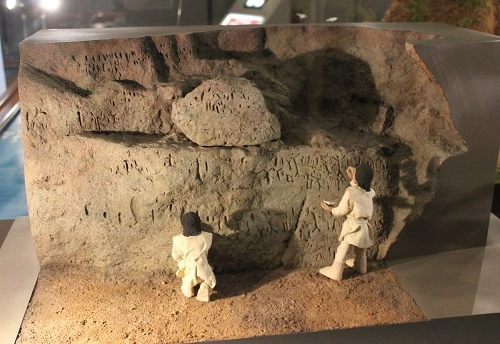

日本の考古学者の皆さん、日本の考古学の新しい記事へようこそ。そうは言っても、気を楽にして始めましょう。 - 1950年代、北海道余市市のフゴッペ洞窟で、縄文時代後期1000年から500年頃の一連の彫刻が発見された。 海水浴のため蘭島を訪れていた札幌市の高校生らが発見した。 これに先立ち、1927年に国鉄函館本線の土塁工事中に9個の彫刻が発見された。 - 洞窟からは動物や魚の骨が多数出土しました。 貝類では二枚貝やカタツムリ、魚類ではヒラメやヒラメなどの沿岸魚からクジラまで、哺乳類ではシカのほか、キツネやタヌキ、オオカミの骨も見つかりました。 - このことからも、当時は食糧が豊富にあり、人々は狩猟や漁業に専念していたことがわかります。 本州で稲作を中心とした弥生文化が発展していた頃、北海道では稲作をする必要はありませんでした。 人を乗せた船の彫刻は北アジアで見られるものと似ていると言われています。 - 気に入っていただければ幸いです。今後の投稿でお会いしましょう。良い一週間をお過ごしください。 - Welcome, Japanesearchaeologicalists, to a new installment of Japanese archaeology. Having said that, make yourself comfortable and let's begin. - In the 1950s, a series of engravings dating from the late Jomon period 1000-500 were discovered in Hokkaido Prefecture in the Fugoppe Cave located in the city of Yoichi. They were discovered by high school students from Sapporo who were visiting Orchid Island to bathe in the sea. Before that, nine carvings were discovered in 1927 during earthworks on the Hakodate main line of the Japanese National Railways. - Many animal and fish bones were excavated in the cave. Shellfish include bivalves and snails, fish range from coastal fish such as flounder and flounder to whales, and mammals include deer, and bones of foxes, raccoon dogs and wolves were also found. - This shows that at that time food was abundant and that people dedicated themselves to hunting and fishing. When the Yayoi culture based on rice cultivation was developing in Honshu, there was no need to grow rice in Hokkaido. The carvings of boats carrying people are said to be similar to those found in northern Asia. - I hope you liked it and we'll see you in future posts and have a good week. - Sean bienvenidos, japonistasarqueológicos, a una nueva entrega de arqueología nipona, una vez dicho esto pónganse cómodos qué empezamos. - En la década de los años 50 se descubrió en la prefectura de Hokkaido en la cueva Fugoppe localizada en la ciudad de Yoichi, se hallaron una serie de grabados que datan del periodo Jomon final 1000-500. Fueron descubiertos por estudiantes de secundaria de Sapporo que visitaban la Isla Orquídea para bañarse en el mar. Antes de eso, se descubrieron nueve tallas en 1927 durante los trabajos de remoción de tierra en la línea principal de Hakodate de los Ferrocarriles Nacionales de Japón. - En la cueva se excavaron muchos huesos de animales y peces. Los mariscos incluyen bivalvos y caracoles, los peces van desde peces costeros como la platija y la platija hasta las ballenas, y los mamíferos incluyen ciervos, y también se encontraron huesos de zorros, perros mapaches y lobos. - Esto demuestra que en aquella época abundaba la comida y que la gente se dedicaba a la caza y la pesca. Cuando la cultura Yayoi basada en el cultivo del arroz se estaba desarrollando en Honshu, no había necesidad de cultivar arroz en Hokkaido. Se dice que las tallas de barcos que transportan personas son similares a las encontradas en el norte de Asia. - Espero que os haya gustado y nos veamos en próximas publicaciones que pasen una buena semana.
El origen de un país y su prehistoria, un paseo por la historia del país del sol naciente. /国の成り立ちと先史、日出ずる国の歴史を歩く。/The origin of a country and its prehistory, a walk through the history of the country of the rising sun.
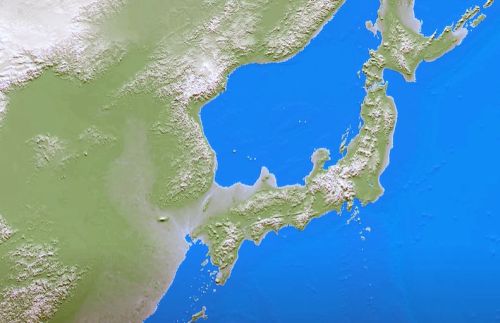

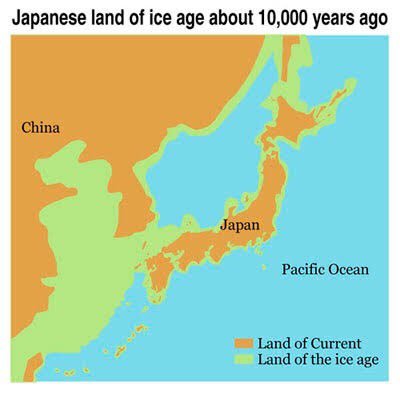

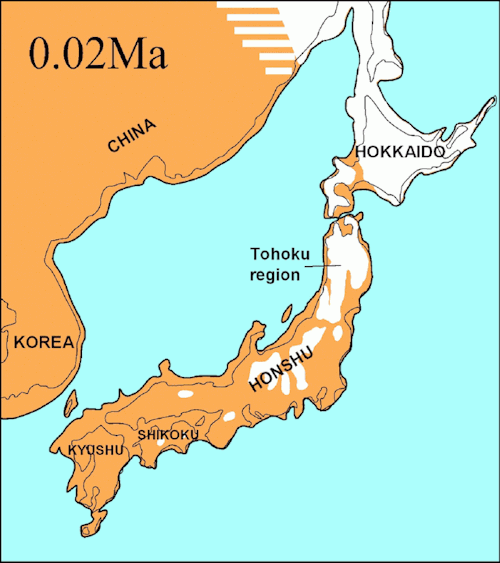

Sean bienvenidos, japonistasarqueológicos, a una nueva entrega de arqueología nipona e historia nipona, una vez dicho esto pónganse cómodos qué empezamos.
-
En los capítulos 1,2,3:Hablamos de: ¿Cuándo llegaron por primera vez los homínidos a Japón? ¿De qué vivían? Hablamos un poco de su geografía, de las cuatro eras glaciales, también se mencionó el holoceno. Empezamos a hablar del pleistoceno, y de cuando empezó la prehistoria de hace 2,5 (esta fecha está desfasada actualmente ronda 4 millones, por los hallazgos de industria lítica) a 7 millones de años. Comentamos algunos homínidos: Homo neanderthalensis, Homo heidelbergensis, homo ergaster entre otros homínidos, comentamos como África es la cuna de la humanidad, y su diversidad de dispersiones migratorias. También se comentó la llegada los homínidos a Okinawa hace 30.000-40.000 años y los Ainus como posibles primeros pobladores. Seguimos hablando del pleistoceno, estuvimos explicando un poco sobre el pleistoceno, se mencionó un poco la formación del archipiélago, mencioné mi posible teoría y al final terminamos con ¿Cómo se llaman las placas tectónicas que forman el archipiélago?
-
Espero que os guste y nos vemos en próximas publicaciones, que pasen una buena semana.
-
日本の考古学者諸君、ようこそ、日本考古学と日本史の新連載へ!さあ、くつろいで、始めよう。
第1章、第2章、第3章では、「ヒト科の動物はいつ日本にやってきたのか?地理、4つの氷河期、完新世についても少し触れました。更新世について話し始め、先史時代が始まった250万年前(この年代は、石器産業の発見により、現在では約400万年古くなっている)から700万年前について話した。ホモ・ネアンデルターレンシス、ホモ・ハイデルベルゲンシス、ホモ・エルガスターなどのホミノイドについて解説し、アフリカが人類発祥の地であること、その移動分散の多様性について述べた。また、3万~4万年前の沖縄へのヒト科動物の到着と、最初の入植者である可能性のあるアイヌ人についても議論した。私たちは更新世について話を続け、列島の形成について少し説明し、私が可能性のある説を述べ、最後にこう締めくくった。 列島を形成しているプレートの名前は?
それではまた、良い一週間を。
-
Welcome, Japanese archaeologists, to a new instalment of Japanese archaeology and Japanese history, so make yourselves comfortable and let's get started.
In chapters 1,2,3:We talk about: When did hominids first arrive in Japan? What did they live on? We talked a little bit about their geography, the four ice ages, the Holocene was also mentioned. We started talking about the Pleistocene, and when prehistory began from 2.5 (this date is now out of date by about 4 million years ago, due to the findings of lithic industry) to 7 million years ago. We commented on some hominids: Homo neanderthalensis, Homo heidelbergensis, homo ergaster among other hominids, we commented on how Africa is the cradle of humanity, and its diversity of migratory dispersions. We also discussed the arrival of hominids in Okinawa 30,000-40,000 years ago and the Ainus as possible first settlers. We continued talking about the Pleistocene, we were explaining a bit about the Pleistocene, the formation of the archipelago was mentioned a bit, I mentioned my possible theory and at the end we finished with What are the names of the tectonic plates that form the archipelago?
I hope you like it and see you in future posts, have a nice week.





Mausoleo Nikko Tosho-gu, construido en el siglo XVII por Iemitsu, sucesor de Tokugawa Ieyasu. Es un lugar compuesto por un horror vacui, horror al vacío, consta con un gran bestiario de animales con un alto lujo de detalles, es un lugar donde se ve, el máximo esplendor del arte tradicional japonés budista y sintoísta en una gran armonía. - Nikko Tosho-gu Mausoleum, built in the 17th century by Iemitsu, successor of Tokugawa Ieyasu. It is a place composed of a horror vacui, horror of emptiness, it consists of a large bestiary of animals with great detail, it is a place where you can see the maximum splendor of traditional Japanese Buddhist and Shinto art in great harmony. - 17世紀、徳川家康の後継者である家光によって建てられた日光東照宮。ホラーヴァクイ、空虚の恐怖で構成された場所であり、細部まで描き込まれた動物の大型獣戯画で構成され、日本の伝統的な仏教美術と神道美術が見事に調和した最大の素晴らしさを見ることができる場所である。 -
Capítulo 4: El origen de un país y su prehistoria, un paseo por la historia del país del sol naciente. - El Pleistoceno: ¿Cómo era el clima en el pleistoceno a través de los registros? Los testigos geológicos y los foraminíferos que nos permiten saber cómo era el clima en aquella época, en Japón era muy húmedo y muy frío, hay que tener en cuenta que las temperaturas actuales no son las mismas que hace 1.2 millones de años. ¿Es verdad, que los humanos en el pleistoceno extinguieron a mucha megafauna? Lo cual es una verdad a medias, ya que el ser humano fue una de las muchas causas, por el hecho de que como las temperaturas fueron uno de los factores claves en sus extinciones, por el hecho de que si una especie necesita de determinada para sobrevivir y el ser humano y el clima acaban con ella, pues, hay tenemos el golpe de gracia. Se sabe que en Hokkaido había Mamuts. El territorio Nippo, estaba unido al continente chino y correano en la zona sur por el estrecho de Tsushima o también denominado Paleo - Honshu y al norte por la isla de Sanjin. Como veíamos en el capítulo anterior, ¿Cómo se llaman las placas tectónicas que forman el archipiélago? Está compuesta por cuatro, Placa del Pasifico, EuroAsiática y NorteAmericana. Esto jugará, un papel fundamental, en la conformación del archipiélago japonés. Como ya mencione en el capítulo 3, posiblemente serían un conjunto de pequeñas islas que se fueron cambiando hasta conformar lo que vemos actualmente como Japón. - Mientras unas se indican, otras emergen y así a la inversa, esto deja registros geológicos. Algunas prefecturas donde se han encontrado restos humanos: prefecturas de Hyogo Shizuoka. - Chapter 4: The origin of a country and its prehistory, a walk through the history of the country of the rising sun. - The Pleistocene: What was the climate like in the Pleistocene across records? The geological witnesses and foraminifera that allow us to know what the climate was like at that time, in Japan it was very humid and very cold, we must take into account that current temperatures are not the same as 1.2 million years ago. Is it true that humans in the Pleistocene extinct many megafauna? Which is a half truth, since the human being was one of the many causes, due to the fact that since temperatures were one of the key factors in their extinctions, due to the fact that if a species needs a certain amount to survive and the human being and the climate put an end to it, well, there we have the coup de grace. It is known that there were Mammoths in Hokkaido. The Nippo territory was joined to the Chinese and Correan continent in the south by the Strait of Tsushima or also called Paleo-Honshu and to the north by the island of Sanjin. - As we saw in the previous chapter, what are the names of the tectonic plates that form the archipelago? It is made up of four, Pacific, Euro-Asian and North American Plates. This will play a fundamental role in the formation of the Japanese archipelago. As I already mentioned in chapter 3, they were possibly a set of small islands that changed until they formed what we currently see as Japan. While some are indicated, others emerge and so on, this leaves geological records. Some prefectures where human remains have been found: Hyogo Shizuoka prefectures. - 第4章 国の成り立ちと先史、日出ずる国の歴史を歩く。 - 更新世: 記録に残る更新世の気候はどのようなものでしたか? 地質学的証拠と有孔虫は、当時の日本がどのような気候であったかを知ることを可能にします。日本は非常に湿気が多く、非常に寒かったため、現在の気温は 120 万年前と同じではないことを考慮する必要があります。 更新世の人類が多くの巨大動物を絶滅させたというのは本当ですか? これは半分真実です。なぜなら、温度が絶滅の重要な要因の1つであるという事実、そして種が生き残るためにある程度の量が必要であるという事実のため、人間は多くの原因の1つであるからです。人間と気候がそれに終止符を打ったのです。まあ、ここで私たちは幸運をもたらしました。 北海道にはマンモスがいたことが知られています。 日豊領土は、南は対馬海峡、または古本州とも呼ばれ、北は三津島によって中国大陸とコレリア大陸につながっていました。 - 前の章で見たように、列島を形成する構造プレートの名前は何ですか? 太平洋プレート、ヨーロッパ・アジアプレート、北米プレートの4枚で構成されています。 それは日本列島の形成に根本的な役割を果たします。 第 3 章ですでに述べたように、それらはおそらく、私たちが現在日本として見ているものを形成するまでに変化した小さな島の集まりであった可能性があります。 示されているものもあれば、出現しているものもあり、これにより地質学的記録が残ります。 人骨が発見された都道府県: 兵庫県 静岡県。 -


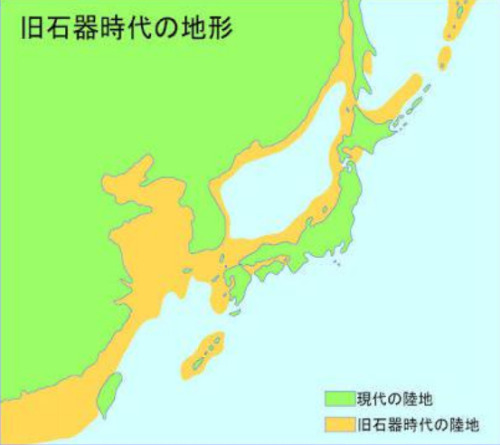

コストコ予定地で「遺構を一般公開せず埋めた」報道 市教委「法律違反かの印象与える記事は心外」...朝日新聞の見解は
-


Report on 'remains buried without public access' at planned Costco site, City Board of Education: 'It is disturbing to read an article that gives the impression that it is against the law…'… What is the Asahi Shimbun's view?


Capítulo 3: El origen de un país y su prehistoria, un paseo por la historia del país del sol naciente.
-
El Pleistoceno:
-
Sean bienvenidos, a una nueva serie, de arqueología prehistórica, en esta ocasión, nos trasladamos al país del sol naciente. En los capítulos anteriores hablamos de: ¿Cuándo llegaron por primera vez los homínidos a Japón? ¿De qué vivían?, hablamos algo de su geografía, aunque no todo lo que a mí me hubiera gustado, por eso en este episodio y en los venideros la iremos analizando y como conformó la prehistoria japonesa hasta su final, también comentamos el inicio de la prehistoria humana a nivel global y de los primeros humanos de africanos que hablamos de forma superficial, también hablamos de ¿Quiénes habitaban Japón cuando ellos llegaron? Y de ¿cuándo llegaron? Respondimos a las preguntas de forma sintética, en los siguientes capítulos hablaremos más de cada uno de ellos en profundidad, como es debido dicho esto pónganse cómodos que empezamos.
-
El pleistoceno fue un periodo glacial en el cual los casquetes polares eran enormes, no toda la tierra estaba cubierta como se ha hecho creer, había zonas con praderas, una vez aclarado esto damos paso a la geografía que la abordaremos unos cuantos episodios para entender mejor su historia, prehistoria entre otros temas.
-
Geografía nipona en la prehistoria:¿Cuándo se formó el archipiélago japonés? Hay dos teorías, la primera dice que lo más probable es que se formaran por partes cada una de las cuatro grandes islas y otra dice que salieron directamente de una sola formación, es decir, que las placas tectónicas en un solo sismo salieron las cuatro islas¿Qué opinan ustedes? Lo que sí se sabe es que hokkaido se formó de una tajada hace 20 millones de años, yo aporto una tercera teoría que hubiera pequeñas islas y que a raíz de lay se formará el resto de las islas, japón se sitúa en el cinturón de fuego, lo que lo convierte en un objetivo de las actividades volcánicas ¿Cómo se llaman las placas tectónicas que forman el archipiélago? Esta pregunta y muchas más la veremos en los próximos capítulos.
-
Vamos a dividir este capítulo en sus epígrafes para poder hablar de la geografía gracias por valorarlo. -
第3章 国の成り立ちと先史、日出ずる国の歴史を歩く。 - 更新世: - 先史考古学の新しいシリーズへようこそ。この機会に、私たちは日出ずる国に移ります。 前の章では、ヒト科が初めて日本に到達したのはいつですか? 彼らは何を食べて暮らしていたのでしょうか?私たちは彼らの地理について少し話しましたが、私が望んでいたすべてではありませんでしたので、このエピソードと今後のエピソードではそれを分析し、それが終わりに至るまで日本の先史時代をどのように形作ったのか、また、古代の始まりについても説明します。世界レベルでの人類先史と、私たちが表面的に語る最初のアフリカ人についても話しますが、彼らが到着したとき、誰が日本に住んでいたのかについても話します。 そして彼らはいつ到着しましたか? 私たちは総合的な方法で質問に答えました。次の章では、それぞれの質問について詳しく説明します。言うまでもなく、安心して始めましょう。 - 更新世は、極冠が巨大だった氷河期で、信じられているように地球全体が覆われていたわけではなく、草原のある地域もありました。これが明らかになると、地理の問題に道が譲られます。これについては、いくつかのエピソードで取り上げます。その歴史、先史時代などのトピックをより深く理解するために。 - 先史時代の日本の地理: 日本列島はいつ形成されたか? 2つの理論があり、1つは4つの大きな島がそれぞれ部分的に形成された可能性が最も高いというもので、もう1つは単一の地層から直接生じたもの、つまり1回の地震でプレートが残ったものであるというものです。四島についてどう思いますか? 知られているのは、北海道は2000万年前に一片に形成されたということである。私は、小さな島々が存在し、その結果として残りの島々が形成されるだろうという3番目の理論を提供する。日本は火の輪の中に位置している。列島を形成するプレートを何というでしょう? この質問とさらに多くの質問を次の章で見ていきます。 - 地理についてお話しできるよう、この章をエピグラフに分割する予定です。ご評価いただきありがとうございます。
-
Chapter 3: The origin of a country and its prehistory, a walk through the history of the country of the rising sun.
The Pleistocene:
Welcome to a new series of prehistoric archeology, on this occasion, we move to the country of the rising sun. In the previous chapters we talked about: When did hominids first arrive in Japan? What did they live on? We talked a little about their geography, although not everything I would have liked, so in this episode and in future ones we will analyze it and how it shaped Japanese prehistory until its end, we also discuss the beginning of human prehistory at a global level and the first African humans that we talk about superficially, we also talk about Who inhabited Japan when they arrived? And when did they arrive? We answered the questions in a synthetic way, in the following chapters we will talk more about each of them in depth, as it should be said, make yourself comfortable and let's begin.
The Pleistocene was a glacial period in which the polar caps were enormous, not all the earth was covered as it has been believed, there were areas with grasslands, once this is clarified we give way to geography, which we will address in a few episodes to understand better. its history, prehistory among other topics.
Japanese geography in prehistory: When was the Japanese archipelago formed? There are two theories, the first says that it is most likely that each of the four large islands were formed in parts and the other says that they came out directly from a single formation, that is, that the tectonic plates in a single earthquake left the four islands. What do you think? What is known is that Hokkaido was formed in one slice 20 million years ago, I provide a third theory that there were small islands and that as a result of this the rest of the islands will be formed, Japan is located in the ring of fire , making it a target for volcanic activities. What are the tectonic plates that form the archipelago called? We will see this question and many more in the next chapters.
We are going to divide this chapter into its epigraphs to be able to talk about geography, thank you for valuing it.

Sean bienvenidosfanaticosarqueológicos a una nueva noticia arqueológica del país del sol naciente ¿Dé que trata dicha noticia? Pues a continuación sin más demora os traigo un supernotición del periodo Asuka(592-710).
-
Se han descubierto unos restos arqueológicos que datan del año 650 hace unos 1300 años de antigüedad en la antigua ciudad de Asuka en la prefectura de Nara, para la próxima publicación hablaremos de las prefecturas, aunque sea un resumen.
-
¿Quién ha encontrado estos restos arqueológicos? Fueron encontrados por el Instituto Arqueológico de Kashihara del que ya hablaremos próximamente. ¿Cuál era el uso de este canal? Serviría para desviar el agua que se desbordaba para llenar el estanque que os dejaré una ilustración del mismo.
-
Las piedras tienen un diámetro de 6 metros, las cuales están pavimentadas. Desde luego una gran obra hidráulica para su época. - Os deseo un feliz día y nos vemos en próximas publicaciones un cordial saludo.
-
考古学ファンの皆様、日出ずる国からの新しい考古学ニュースへようこそ。このニュースは何についてのものですか? さて、早速、飛鳥時代(592年~710年)のスーパーニュースをお届けします。
-
古都奈良県の飛鳥市で約1300年前の650年頃の遺跡が発見されたが、次回はまとめではあるが都道府県の話をしたいと思う。 - 誰がこれらの遺跡を発見したのでしょうか? それらは橿原考古学研究所によって発見されました。これについては後ほど説明します。 このチャンネルの用途は何ですか? これは、溢れ出た水を池に流すのに役立ちます。その図を残しておきます。
-
直径6メートルの石が敷き詰められている。 確かに当時としては素晴らしい水圧作業でした。
-
幸せな一日をお祈りいたします。また今後の出版物でお会いしましょう。心からご挨拶申し上げます。
-


Welcome archaeological fans to a new archaeological news from the country of the rising sun. What is this news about? Well, without further delay, I bring you a super news from the Asuka period (592-710).
-
Archaeological remains dating back to the year 650, about 1,300 years ago, have been discovered in the ancient city of Asuka in Nara Prefecture. For the next publication we will talk about the prefectures, even if it is a summary.
-
Who found these archaeological remains? They were found by the Kashihara Archaeological Institute, which we will talk about soon. What was the use of this channel? It would serve to divert the water that was overflowing to fill the pond, which I will leave you with an illustration of.The stones have a diameter of 6 meters, which are paved. Certainly a great hydraulic work for its time.
-
I wish you a happy day and see you in future publications, cordial greetings.


Capítulo 2: El origen de un país y su prehistoria, un paseo por la historia del país del sol naciente. El Pleistoceno Sean bienvenidos, a una nueva serie, de arqueología prehistórica en esta ocasión, nos trasladamos al país del sol naciente. En el capítulo anterior, estuvimos dando una pequeña introducción, de la prehistoria nipona, ha llegado la hora de matizar más en profundidad cada apartado.
-
En este capítulo, nos vamos a centrar en el pleistoceno, para entender la evolución meteremos, algunos contextos del mundo para que puedan ir comprendiendo el pleistoceno japonés del resto del mundo. La prehistoria humana comienza hace unos 2,5 a 7 millones de años aproximadamente, los primeros homínidos, salieron de África, Como son el caso de: Homo neanderthalensis, Homo heidelbergensis, Homo ergaster entre otros homínidos.
-
Sabemos que los primeros homínidos, que salieron de la cuna de áfrica, fueron los homo habilis y erectus los cuales se fueron desplazando por los distintos continentes, pasando primero por la zona de la península del Sinaí y luego pasaron por el corredor siro palestino.
-
En el capítulo anterior, salió la pregunta¿Cómo llegaron los primeros homínidos al archipiélago? Llegaron hace unos 30.000 a 90.000 aproximadamente, han salido recientes estudios arqueológicos, en respecto a esta parte, la cual ya os la comentaré en una noticia arqueológica, ¿De qué medio disponían?, probablemente, a través de canoas o balsas llegando así a la zona de Okinawa, ¿Quiénes habitaban Japón cuando ellos llegaron?, pues los Ainu, ¿cuándo llegaron?, aproximadamente hace unos 110.000 y 10.000 años antes de cristo.
-
Este capítulo lo vamos a tener que ir dividiendo en partes para irlo trabajando poco a poco. Espero que os haya gustado y nos vemos en el siguiente capítulo. Un fuerte abrazo.

Capítulo 1 El origen de un país y su prehistoria, un paseo por la historia del país del sol naciente. Sean bienvenidos, a una nueva serie, de arqueología prehistórica, en esta ocasión, nos trasladamos al país del sol naciente. ¿Cuándo llegaron por primera vez los homínidos a Japón? ¿De qué vivían? Todo y mucho más lo iremos viendo en los próximos capítulos. Dicho esto, pónganse cómodos que empezamos.
-
Antes que nada, un poco de geografía: En este apartado analizaremos la geografía nipona de aquellos entonces. La parte norte del país estaba bajo una gran capa de hielo, además, Japón estaba prácticamente unido, fue a finales del pleistoceno, cuando llegó el holoceno (hace unos 12000 años), previamente, tuvieron lugar cuatro glaciaciones(Günz, Mindel, Riss y Würm las cuales tuvieron lugar en el cuaternario).
-
El holoceno abarca hasta nuestros días, este efecto hace desaparecer a los grandes animales, plantas, etc. ¿Había dinosaurios en el archipiélago antes de la llegada de los humanos?, este punto no nos cunde, pero haré un pequeño resumen, para que se hagan una idea. -
Espero que os esté gustando, en los próximos capítulos hablaremos en profundidad de todo, os deseo un cordial saludo mis queridos fanáticos.
-
Chapter 1 The origin of a country and its prehistory, a walk through the history of the country of the rising sun. Welcome to a new series of prehistoric archeology, on this occasion, we move to the country of the rising sun. When did hominids first arrive in Japan? What did they live on? We will see everything and much more in the next chapters. That being said, get comfortable and let's get started.
-
First of all, a little geography: In this section we will analyze the Japanese geography of those times. The northern part of the country was under a large ice sheet, in addition, Japan was practically united, it was at the end of the Pleistocene, when the Holocene arrived (about 12,000 years ago), previously, four glaciations took place (Günz, Mindel, Riss and Würm which took place in the Quaternary).
-
The Holocene extends to the present day, this effect makes large animals, plants, etc. disappear. Were there dinosaurs in the archipelago before the arrival of humans? This point is not relevant to us, but I will give a brief summary to give you an idea.
-
I hope you are liking it, in the next chapters we will talk in depth about everything, I wish you a cordial greeting my dear fans.
-
第一章 国の成り立ちと先史、日出ずる国の歴史を歩く。 先史考古学の新しいシリーズへようこそ。この機会に、私たちは日出ずる国に移ります。 原人が日本に初めて到来したのはいつですか? 彼らは何を食べて生きていたのでしょうか? 次の章ですべてを見ていきます。 そうは言っても、安心して始めましょう。
-
まず最初に、地理について少し説明します。このセクションでは、当時の日本の地理を分析します。 国の北部は大きな氷床の下にあり、さらに日本は事実上統一されており、完新世が到来した更新世の終わり(約1万2000年前)であり、以前は4回の氷河期が起こっていた(ギュンツ、ギュンツ、第四紀に起こったミンデル、リス、ヴュルム)。 完新世は現在まで続き、この影響により大きな動物や植物などが消滅します。 人類が到来する前、この列島には恐竜がいたのでしょうか? この点は私たちには関係ありませんが、イメージを伝えるために簡単にまとめておきます。
-
気に入っていただければ幸いです。次の章ではすべてについて詳しく説明します。親愛なるファンの皆様に心からのご挨拶を申し上げます。
Tanque japonés, abatido por tropas norteamericanas, agosto del 42, guerra del Pacífico./Japanese tank, shot down by North American troops, August 42, Pacific War./米軍によって撃墜された日本の戦車(42年8月、太平洋戦争)。

Look at my sick ass wip dildosaurus (unfinished!)
Here's the timelaps




